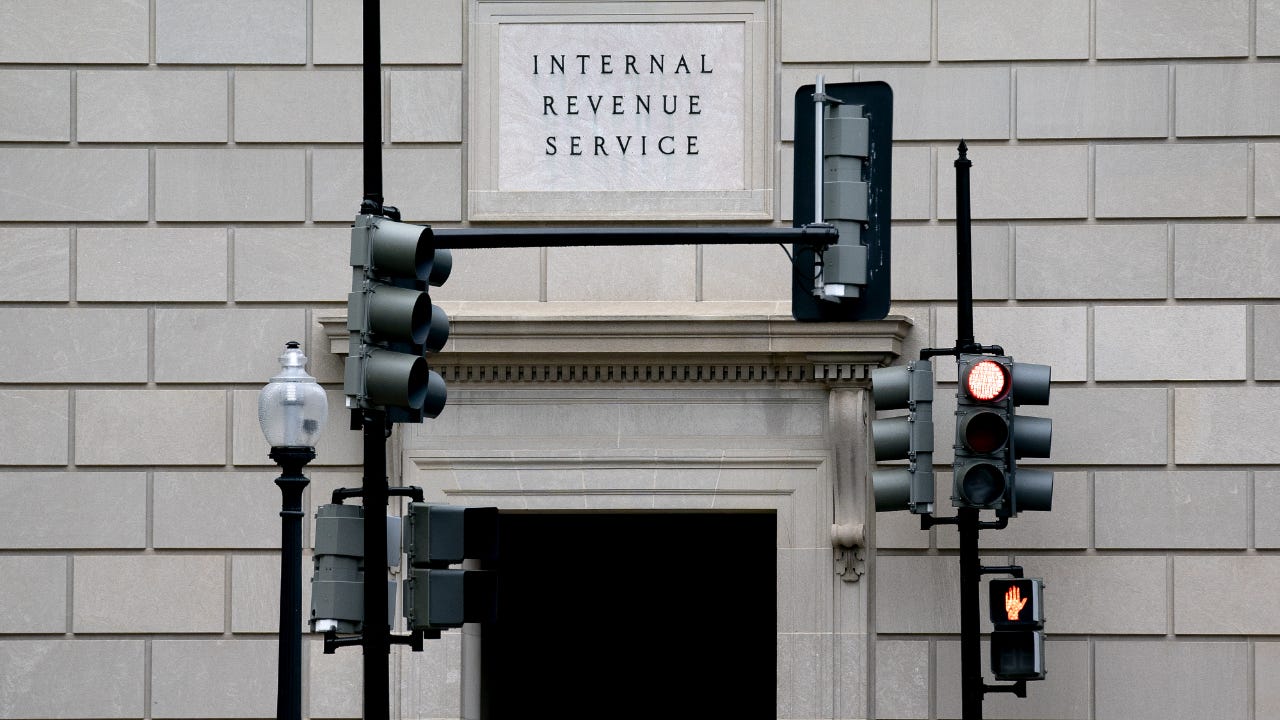6 common reasons your investments may trigger an IRS audit

The Bankrate promise
At Bankrate we strive to help you make smarter financial decisions. While we adhere to strict , this post may contain references to products from our partners. Here's an explanation for .
The dreaded IRS audit. Any number of things – unsubstantiated deductions, missing income, huge business losses, failing to report holdings of cryptocurrency – could land you in the hot seat with the taxman. Beyond these ordinary items, taxpayers with investments also need to look out for investing-specific causes for an audit.
But here’s the good news for most filers: Just 0.4 percent of all individual returns in fiscal 2022 were flagged for an audit, according to CNBC. Most of those were handled by mail, so the Hollywood-style sit-down with a friendly tax agent is more a film nightmare than actual reality.
Here are some common reasons why individual investors may trigger an audit.
What can cause a tax audit?
The IRS typically sets its sights on filers with huge deductions relative to their income, business filers with extra or fishy write-offs, those claiming the earned income tax credit or anything that looks unusual. While investing is not the most common trigger for an audit, it still happens.
One of the easiest ways to avoid a run-in with the IRS is to report all your income accurately, since the IRS automates this part of the process and flags discrepancies.
“In recent history, the IRS is underfunded and understaffed, so the trend in tax examinations has been to match up information returns (for example, Form 1099s) given to the taxpayer to what the taxpayer reports on their returns,” says Brett Cotler, a tax attorney at Seward & Kissel LLP.
Still, investors need to be careful, especially if they’re earning a lot.
“IRS audits typically follow the money,” says John Madison, CPA and financial counselor at Dayspring Financial Ministry in Ashland, Virginia. “Audits are more likely for higher-income individuals, as the potential to yield larger tax adjustments lies with that demographic.”
Of course, that’s not a license for low-income filers to fudge their returns. Because returns are managed electronically, the IRS can quickly detect if something looks unusual.
“IRS audits are caused by what is called a discriminant function test. It compares the average deductions taken over a large number of returns and determines if your deductions are higher than the averages,” says Chris Cooper, a California-licensed professional fiduciary in San Diego.
The IRS tests “give broad ranges for deductions versus income, and if something looks amiss, out of range, then you will be questioned,” according to Morris Armstrong, an enrolled agent who represents clients before the IRS.
Investors need to be on the lookout for discrepancies in the following areas that might make the IRS sit up and take notice of their return.
Top IRS audit triggers for investments
1. Real estate deductions
If you’ve invested in real estate and you manage it yourself, you’ll be writing off legitimate expenses related to the rental property – such as repairs, depreciation and advertising expenses. However, problems arise when property owners get aggressive, writing off too much for the property or claiming deductions that they shouldn’t be able to deduct.
With so many low-rate mortgages created between 2020 and 2022, “it would cause scrutiny if there are large mortgage deductions that seemed out of line,” says Megan Gorman, managing partner at Chequers Financial Management in San Francisco.
Cooper highlights taking a large loss on farmland as a potential red flag for the IRS, as well.
While the IRS gives landlords some latitude in claiming deductions, it’s not carte blanche, and real estate investors will need to substantiate deductions if the IRS knocks on their door.
2. Missing dividends and interest
Forget to include all of the dividends and interest from your banks and brokerages? That might make the IRS curious, especially if the amount is material. But even if you have made an error, you might not need to sweat.
“We all have received that notice from the IRS saying we left some income off of a return,” says Armstrong, “often an innocent mistake of overlooking a 1099 for bank interest or stock dividends. Those are easily corrected.”
The IRS may simply correct the deficiency and deduct the extra from the return you filed, or if the tax exceeds your refund check, you’ll be asked to cough up more money.
But the IRS may not look so kindly on a much larger 1099 that goes missing. “The unreported income could possibly trigger a further in-depth audit,” says Eric Bronnenkant, head of tax at Betterment, a robo-advisor.
3. Missing capital gains
If you sell a stock or other security and you’ve earned a profit on it, congratulations – but you now have a capital gain. You will owe tax on that gain and the rate depends on whether you held the security for more than a year as well as your total taxable income.
Taxpayers ordinarily note a capital gain on Schedule D of their return, which is the form for reporting gains on losses on securities. If you fail to report the gain, the IRS will become immediately suspicious. While the IRS may simply identify and correct a small loss and ding you for the difference, a larger missing capital gain could set off the alarms.
While your brokerage will send you a tax form that records your gains and losses, you’re on the hook for properly reporting them to the IRS. And it’s easy to forget to report them for accounts that you check infrequently.
Finally, don’t assume that you can skip reporting a capital gain because the broker’s year-end tax report was delivered late. If you file your taxes too early and don’t report the gain, you’ll have to file an amended return and explain to the IRS what happened.
4. Failure to report cryptocurrency
Cryptocurrency is a big area for enforcement right now, says Brian R. Harris, tax attorney at Fogarty Mueller Harris, PLLC in Tampa. So if you trade, hold or use any cryptocurrency, you may be a target for audit or a compliance check, he says.
Annual tax returns now require you to state whether you’ve transacted in digital assets, and the question appears right at the top of Form 1040, so it’s tough to say you didn’t see it. Failure to report that you’ve owned or traded any digital currency or NFT could land you in hot water.
But other crypto-related matters could also have you running afoul of the law. For example, you may have a tax liability on any capital gains you’ve made, even if you’ve simply spent digital currency on goods and services and not actually traded it.
You’ll have to be extra vigilant, because many brokers or exchanges may not be diligent about sending 1099 forms reporting gains and losses to the IRS. And if you’re spending crypto, you may have to keep your own records and figure your tax liability.
Here are the other things you need to know about cryptocurrency and taxes.
5. Misfiled employer stock options
The tax issues surrounding employer stock options can be tricky, to say the least. In many cases, employees are reporting little to no gains on them, so they may think they don’t need to report it. In fact, it’s common for the taxpayer to not report the sale, but that’s a big no-no.
Here’s what often happens: an employee may be granted options as a perk. When employees want to exercise those options, they put up the money and buy the stock at the agreed-upon price. Many times, employees will simply turn around and sell the stock. However, they often fail to report the exercise price of the options, which is the correct cost basis for figuring the taxable gain.
“This common options strategy still requires reporting of a sale on a tax return even though there is little to no gain or loss,” says Bronnenkant. “Although this is a fixable problem by ultimately reporting the correct cost basis, the IRS may initially assume that all of the sale proceeds are short-term gains even though they may not actually be taxable at all.”
If you don’t report the cost basis, the IRS just assumes that the basis is $0 and so the stock’s sale proceeds are fully taxable, maybe even at a higher short-term rate. The IRS may think you owe thousands or even tens of thousands more in taxes and wonder why you haven’t paid up.
6. Filing late
The IRS wants to be paid, and it wants to be paid on time. That can be difficult for investors sometimes, especially when some investments may be complicated or year-end statements may arrive late in the tax season. In fact, it’s not uncommon for some companies to report tax information into April or even beyond the typical April 15th tax deadline.
While an investor’s tax returns may be more complicated than the average return, the IRS still wants a timely filing. And by obliging them, you’ll stay off their radar and attract less attention.
What can investors do if contacted by the IRS?
If the IRS contacts you, the first thing you can do is stay cool. “Keep in mind that just because you are subject to audit, it doesn’t mean your return is incorrect,” says Gorman.
Besides conscientiously filing their return and including all their income, investors have other steps that they can take to avoid the taxman calling.
“Simple things can keep you from an audit, including paying taxes on time, filing on time and acting immediately on an IRS notice,” says Paul T. Joseph, founder of Joseph & Joseph Tax and Payroll.
“The IRS seems to focus on items that seem contradictory on the surface,” says Madison. But being merely contradictory is not a reason to avoid claiming a legitimate deduction.
Madison suggests that taxpayers with unusual circumstances could “include a letter of explanation with the return. It’s not bullet-proof audit protection, of course, but it will begin the documentation process that may head off an audit before it even begins.”
For those investing in real estate, keep track of all your rental expenses and deductions, advises Bronnenkant.
And finally just because you have a large deduction doesn’t mean you shouldn’t claim it, even if you think it looks a little unusual. “You need to be able to back up the numbers you have put forth to the IRS,” says Gorman. “Substantiation is key to winning an audit.”
That can be trickier for real estate than for publicly traded stocks. While losses for stocks will be included on a broker’s tax statement, that may not always be the case for real estate expenses. You’ll likely need to hang on to receipts from a variety of stores or independent contractors.
Bottom line
Any deduction or new source of income creates another potential point of interest for the IRS. So in addition to the usual sources of concern such as common deductions and missing income, investors should also conscientiously note income from their stocks, bonds and real estate, among other kinds of investments. But like all taxpayers, they’ll also want to do the little things that keep the IRS from suspecting something is amiss.
Related Articles



